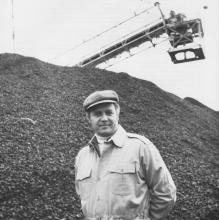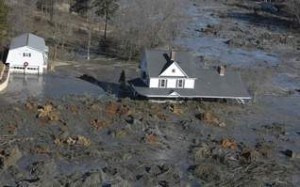Strange and counter-intuitive as it may seem, burning coal produces more radioactive waste than nuclear fission. And it’s not regulated.
Back in 1993, Alex Gabbard, of the Oak Ridge National Laboratory, published “Coal Combustion: Nuclear Resource or Danger” in ORNL Review. Gabbard built on the work of J. P. McBride, R. E. Moore, J. P. Witherspoon, and R. E. Blanco, also of Oak Ridge, in their article, “Radiological Impact of Airborne Effluents of Coal and Nuclear Plants,” Science, Dec. 8, 1978.
McBride et al wrote:
Assuming a 1 percent ash release to the atmosphere (Environmental Protection Agency regulation) and 1 part per million of uranium and 2 parts per million of thorium in the coal (approximately the U.S. average), population doses from the coal plant are typically higher than those from pressurized-water or boiling-water reactors that meet government regulations. Higher radionuclide contents and ash releases are common and would result in increased doses from the coal plant.
Gabbard wrote:
The fact that coal-fired power plants throughout the world are the major sources of radioactive materials released to the environment has several implications. It suggests that coal combustion is more hazardous to health than nuclear power and that it adds to the background radiation burden even more than does nuclear power. It also suggests that if radiation emissions from coal plants were regulated, their capital and operating costs would increase, making coal-fired power less economically competitive.
Finally, radioactive elements released in coal ash and exhaust produced by coal combustion contain fissionable fuels and much larger quantities of fertile materials that can be bred into fuels by absorption of neutrons, including those generated in the air by bombardment of oxygen, nitrogen, and other nuclei with cosmic rays; such fissionable and fertile materials can be recovered from coal ash using known technologies. These nuclear materials have growing value to private concerns and governments that may want to market them for fueling nuclear power plants. However, they are also available to those interested in accumulating material for nuclear weapons. A solution to this potential problem may be to encourage electric utilities to process coal ash and use new trapping technologies on coal combustion exhaust to isolate and collect valuable metals, such as iron and aluminum, and available nuclear fuels.
Makeup of Coal and Ash
Coal is one of the most impure of fuels. Its impurities range from trace quantities of many metals, including uranium and thorium, to much larger quantities of aluminum and iron to still larger quantities of impurities such as sulfur. Products of coal combustion include the oxides of carbon, nitrogen, and sulfur; carcinogenic and mutagenic substances; and recoverable minerals of commercial value, including nuclear fuels naturally occurring in coal.
Coal ash is composed primarily of oxides of silicon, aluminum, iron, calcium, magnesium, titanium, sodium, potassium, arsenic, mercury, and sulfur plus small quantities of uranium and thorium.
Remember that 1.2 Billion gallons of coal ash flooded into the Clinch and Tennessee Rivers and 300 acres of Tennessee on Dec. 22, 2008 (click here and here).
Discussing health effects, Gabbard noted:
Although adverse health effects from increased natural background radioactivity may seem unlikely for the near term, long-term accumulation of radioactive materials from continued worldwide combustion of coal could pose serious health hazards.
The conclusions are inescapable:
We need to keep this in mind before planning new coal plants – even ones, like the Purgen experiment in Rahway in which we will attempt carbon sequestration. As I noted in recent testimony before New Jersey’s Board of Public Utilities regarding the Energy Master Plan, we obtain coal by converting mountains of natural beauty into mountains of toxic waste. This is not sustainable.

